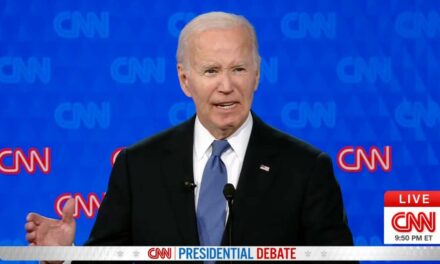We support our Publishers and Content Creators. You can view this story on their website by CLICKING HERE.
GREENVILLE, UT — While her husband was watching a baseball game Sunday, local woman Hannah Wendell idly asked her husband, Mark: “What does OPS stand for?”
According to witnesses, Wendell had no inkling of the fate to which she had just doomed herself with the casual bit of small talk: a 75-minute primer on advanced baseball statistics and data analysis.
“I’m glad you asked, honey,” Mark said, perking up from his spot on the couch. “OK, so, first, we have to talk about the difference between a plate appearance and an at-bat. Are you familiar? No? OK. Wait, let’s back up. You need to understand two separate stats – OBP and slugging – before we can begin to explore the statistical significance of OPS and how it’s impacted the valuation of players as a total offensive package, as well as the consideration of qualities not traditionally appreciated by baseball managers, fans, and even players just a few decades ago.”
“So, let’s dive right in – on-base percentage as a supplemental metric to batting average. Here we go. Let’s take Kyle Schwarber as an example. Traditionally, teams would have looked at his average, which is fairly high this year, though he’s flirted with the Mendoza Line for years. But when you start to look at OBP…”
Having asked the casual question just to make conversation while walking by the TV, Wendell realized she may have made a mistake around minute 17, when Mark pulled out his phone to show her a scene from Moneyball. At approximately the 55-minute mark, her husband reached the exciting climax of his speech, expertly describing the exact significance of OPS as a tool to evaluate a player’s offensive prowess. “So, as you can see, it’s absolutely fascinating how the two metrics combined provide us with a handy, quick glance at a player’s production at the plate, despite – and this is the interesting part – despite the fact that the two stats in question, OBP and SLG, as you’ll remember, have entirely different denominators!”
“Now, of course, you’ll be questioning how OPS takes into account the various ballparks – Coors Field, am I right, babe? Haha – and the short answer is, it doesn’t. That’s when you have to start looking at less casual metrics like wRC+ or OPS+. Or should we start with wOBA?”
Twenty minutes later, Wendell remembered she had to wash her hair and excused herself, though Mark promised to circle back with her for tomorrow’s lesson on WAR.
Check out Hasbro’s latest update to the classic board game “Guess Who?” – now with more genders, inclusion, and fun!*
*Fun not guaranteed
Subscribe to our YouTube channel for more tactical instruction

 Conservative
Conservative  Search
Search Trending
Trending Current News
Current News 





